Eager to catch a delicious salmon but don't know where to start? Don't worry! We've got you covered. This article covers everything you need to know about Australian salmon, including how they are caught and what type of fish they actually are.
Australian salmon, also known as Arripis trutta or salmon trout, is a popular and highly sought-after species among anglers for a "recreational catch" in Australia. These fish are found in the coastal waters of South Australia. They are known for their strong fighting spirit and delicious taste, making them a prime target for recreational and commercial fishermen. However, before you set out to catch Australian salmon, it's important to understand the critical things you need to know about this species.
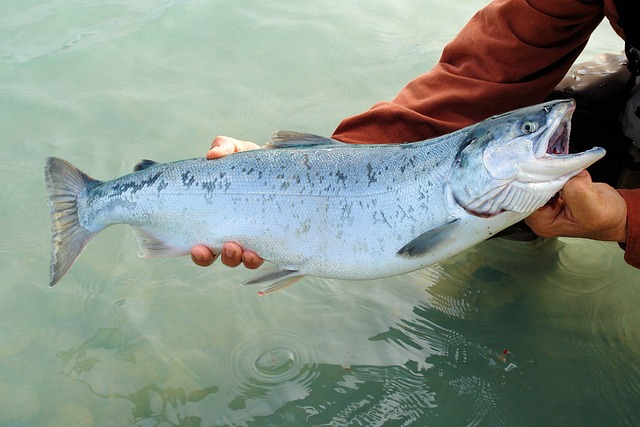
From the different types of salmon found in south Australia to the importance of preserving inshore ecosystems, this article will provide you with all the information you need to know about catching Australian salmon. Whether you're a seasoned angler or a beginner looking to try your hand at this exciting sport, this guide will help you better understand Australian salmon and their important role in our marine environment.
Understanding these fish's biology, habits, and behaviors is essential to catch them successfully. It is also important to be aware of the ecological impact of fishing on these species and the inshore ecosystems they inhabit. This article will explore the critical things you need to know about catching Australian salmon, including the best time of year to catch them, the most effective fishing methods
Catching Australian Salmon
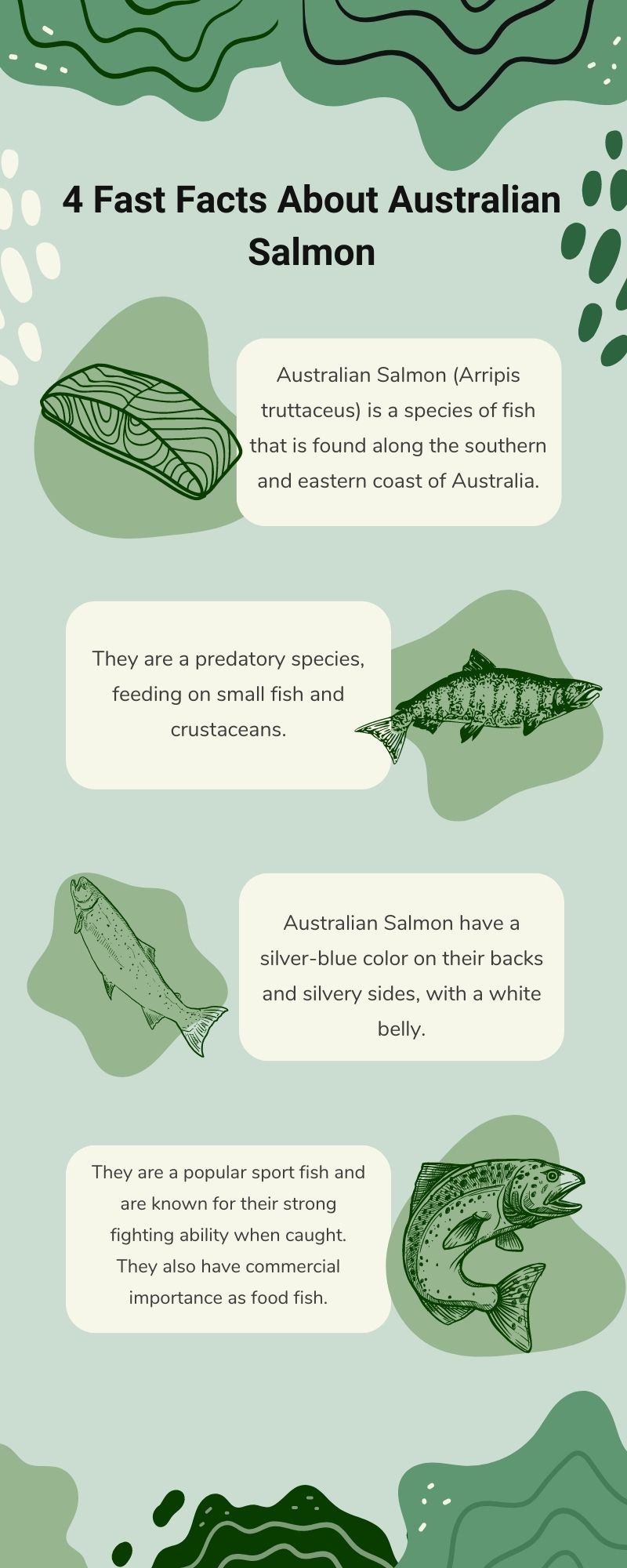
Catching Australian salmon is a popular pastime and recreational activity for many anglers in Australia. One of the most important things to consider when catching Australian salmon is the time of year. These fish are typically caught during the summer months when they are in the shallower waters along the coast, making it easier to catch them. Anglers can use various methods to catch these fish, including trolling, casting lures, and using baits such as pilchards, worms, and squid.
Another key aspect of catching Australian salmon is being aware of the importance of preserving the inshore ecosystems. These fish play an important role in the marine environment, and it's important to be mindful of conservation efforts when catching them. This means being aware of size and bag limits and practicing sustainable fishing techniques.
These fish are known for their strong fighting spirit and delicious taste, making them a sought-after catch for both recreational and commercial fishermen. There are two main types of Australian salmon: Eastern Australian salmon and Western Australian salmon. The eastern Australian salmon can reach 20.7 pounds, whereas the western Australian salmon can grow to over 19.8 lbs.
Eastern Australian Salmon
Eastern Australian salmon can be found along the east coast of Australia, from Queensland to Victoria. These fish are commonly found in cooler waters, such as those found off the coastal waters of Southern Australia. They are a popular species among anglers, as they are known for their strong fight and delicious taste. Eastern Australian salmon are typically caught using baits such as pilchards, worms, and squid.
Western Australian Salmon
Western Australian salmon, on the other hand, can be found in the waters of the west coastal waters of Australia. These fish are known for their strong fight and are typically caught using lures such as soft plastics and metal jigs. Western Australian salmon are also popular among anglers, as they are known for their delicious taste. These fish are typically found in Zealand waters and are often caught in large numbers by commercial fishermen.
Other Species
In addition to Australian salmon, another popular species found in Australian waters is the Australian herring. These fish are typically found in cooler waters and are known for their strong fighting spirit and delicious taste. They are often caught using the same bait as the Australian salmon.
Catching Australian salmon is a rewarding and exciting pastime that offers a delicious and healthy meal, a strong fight, and the opportunity to enjoy the beautiful coastal waters of Victoria. So, gear up, head out to the water, and experience the thrill of catching a wild-caught arripis trutta or a commercial catch; you will not be disappointed.
3 Most Important Tips to Remember
When it comes to catching Australian salmon, there are a few critical things that you need to know:
-
First, it's important to understand the different types of Australian salmon. Arripis trutta, also known as the Australian salmon or salmon trout, is Australia's most commonly caught species. They can be found along the east and west coast, from Queensland to Victoria. They are known for their strong fighting spirit and delicious taste.
-
Another critical thing to know is that Australian salmon can be found in various habitats. Along the coast, they can be found in coastal beaches, estuaries, and bays. In some cases, smaller fish are found in multi-decadal southward penetration along the eastern Victoria coast.
-
It's also important to be aware of the importance of preserving inshore ecosystems. Australian salmon play an important role in the marine environment, and it's important to be mindful of conservation efforts when catching these fish. This means being aware of size and bag limits and practicing sustainable fishing techniques.
By understanding these critical things about Australian salmon, you'll be better equipped to catch and appreciate these fish while also helping to preserve the marine environment for future generations.
How to Store Your Fresh Catch
Storing your fresh catch is an important part of preserving the quality of your fish and maintaining the important ecological role that fish play in our oceans and estuaries. Whether you're a recreational angler or a commercial fisherman, you can take several key steps to ensure that your fish stays fresh and safe to eat.
One of the most important things to consider when storing your fresh catch is the size of the fish. Larger fish will typically have a shorter shelf life than smaller fish, so it's important to plan accordingly. For example, if you catch a large halibut, you'll want to make sure to store it in a cooler with ice as soon as possible to keep it fresh.
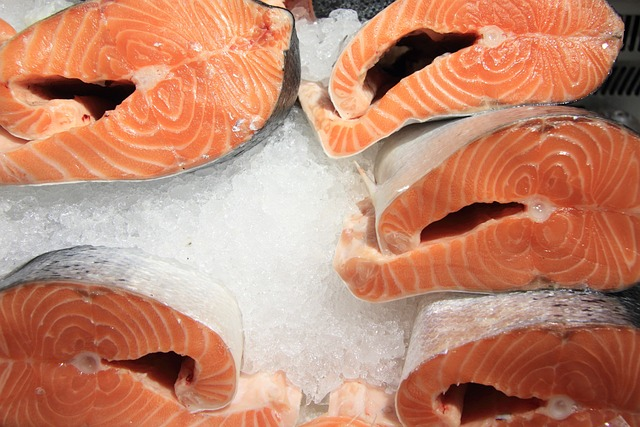
Another key step in storing your fresh catch is to keep it clean. Fish should be cleaned and scaled as soon as possible after they're caught and should be kept in a clean and well-ventilated container until they're ready to be cooked or frozen. This will help to prevent bacteria from growing on the fish and will also help to preserve the taste and texture of the fish.
When it comes to commercial catches, it's also important to follow proper storage guidelines to ensure that the fish stays fresh for as long as possible. This may include using specialized storage facilities and equipment, such as refrigerated trucks and storage containers.
Storing your fresh catch is an important part of preserving the quality of your fish and maintaining the important ecological role that fish play in our oceans and estuaries. By following the key steps outlined above, you can ensure that your fish stays fresh and safe to eat, whether you're a recreational angler or a commercial fisherman.
How to Cook Your Fresh Catch
Cooking your fresh catch is an exciting and delicious way to enjoy the fruits of your labor out on the water. Whether you're a recreational angler or a commercial fisherman, you can take several key steps to ensure that your fish is cooked to perfection.
One of the most important things to consider when cooking your fresh catch is the species of fish that you have caught. Different species have different cooking times and methods, so it's important to know how to cook each species perfectly. For example, bay trout, a species in southern Queensland, is best cooked using a simple pan-fry method with a little butter and lemon juice.
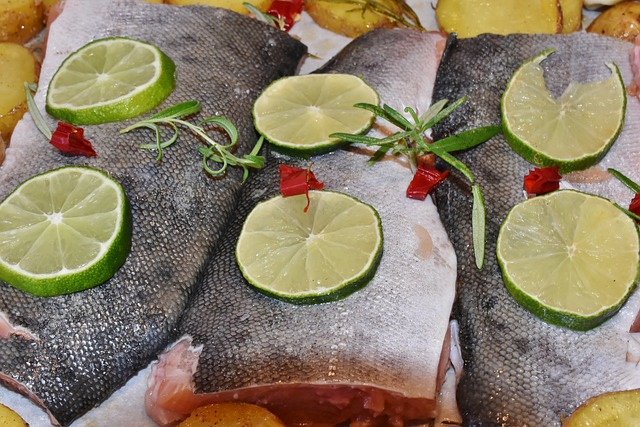
Another key step in cooking your fresh catch is to use the freshest ingredients possible. Fish that is wild-caught is often fresher than commercially caught fish, so it's important to use the freshest ingredients possible to ensure that the fish tastes its best. This may include using fresh herbs, spices, and fresh vegetables and fruits.
When it comes to commercial catch, it's also important to follow proper cooking guidelines to ensure that the fish is cooked to perfection. This may include using specialized equipment, such as commercial-grade ovens and grills.
Cooking your fresh catch is an exciting and delicious way to enjoy the fruits of your labor out on the water. By following the key steps outlined above, you can ensure that your fish is cooked to perfection, whether you're a recreational angler or a commercial fisherman. With the right techniques and ingredients, you can create a delicious and healthy meal that will please your friends and family.
Catch Your Arripis Trutta With The Best Equipment
Catching Australian salmon or Australian herring is a popular and rewarding hobby for many anglers in Australia. Whether you're a recreational angler or a commercial fisherman, understanding the critical things you need to know about this species, such as the different types of salmon found in south Australia, their habitats, and the importance of preserving inshore ecosystems, is essential to catch them successfully. With this knowledge, you'll be better equipped to catch and appreciate these fish while also helping to preserve the marine environment for future generations.
Now that you better understand the arripis trutta or Australian salmons, it's time to gear up and head out to the water! Koala Outdoor offers a wide range of fishing gear, including bait that is perfect for catching Australian salmon. Whether you're a recreational angler or a commercial fisherman, we have everything you need to make your next fishing trip a success. With our wide variety of fishing gear, you'll be well-equipped to catch and appreciate these fish while also helping to preserve the marine environment for future generations.
So, head to the Koala Outdoor website today to purchase the perfect bait for catching Australian salmon and prepare for your next fishing adventure!





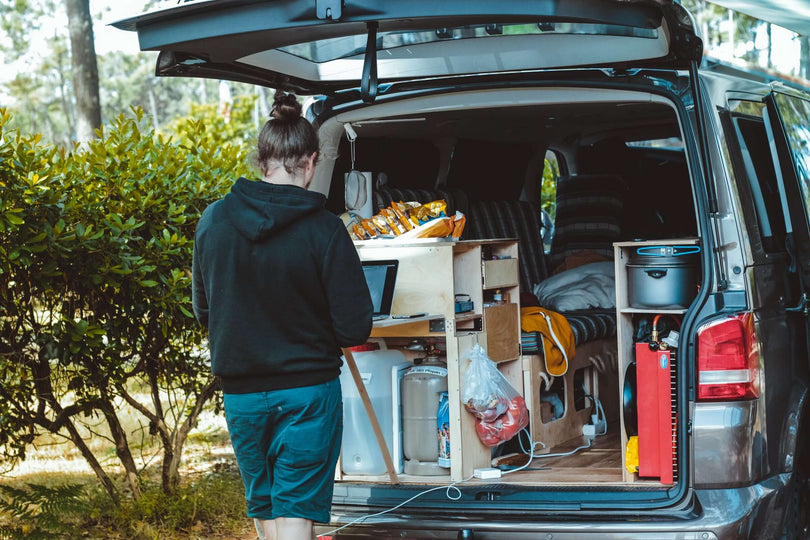
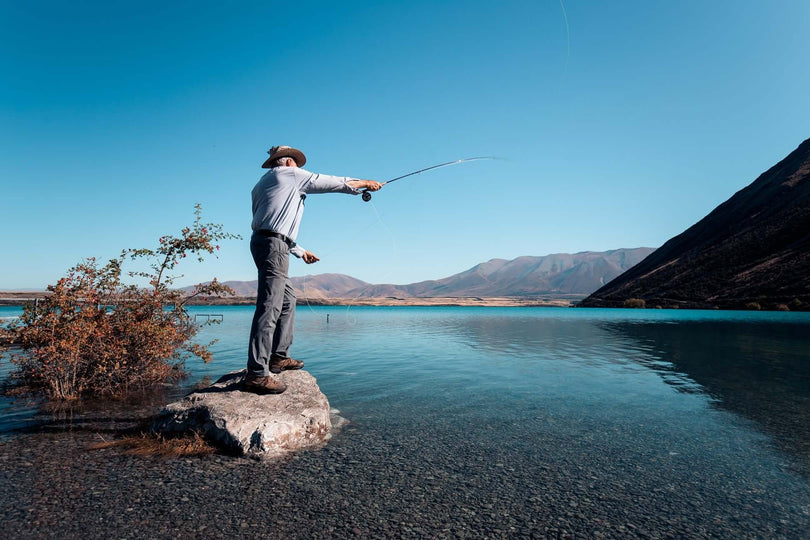
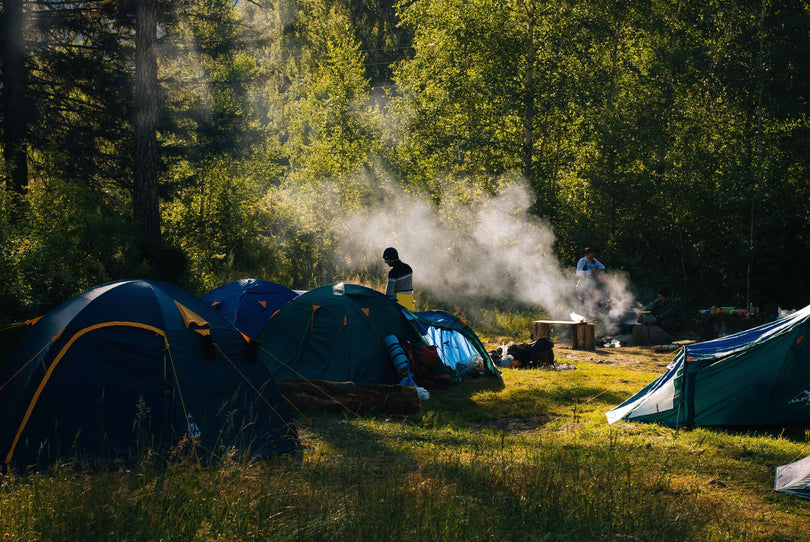


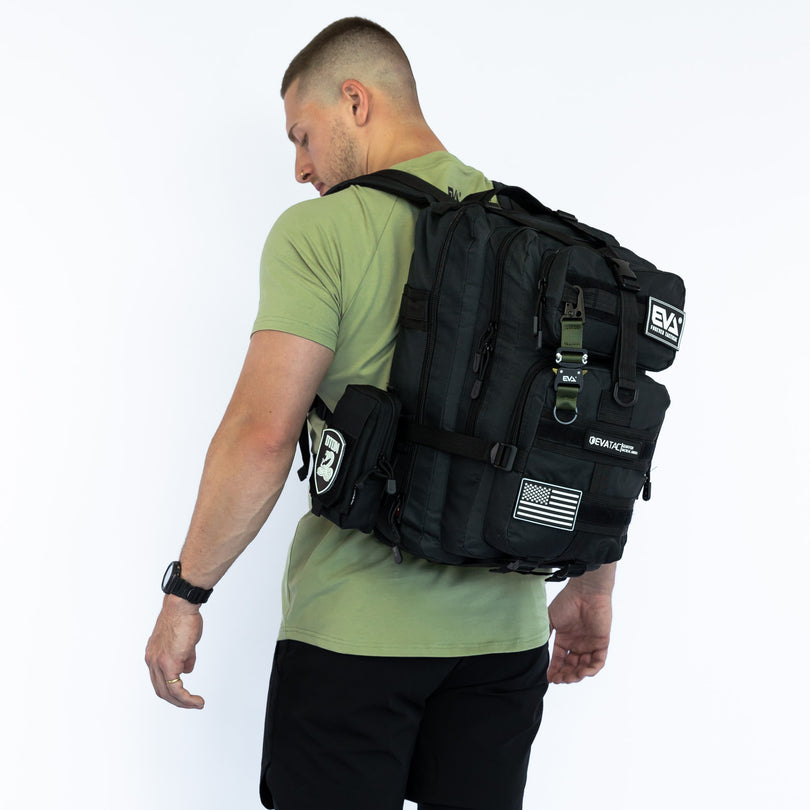
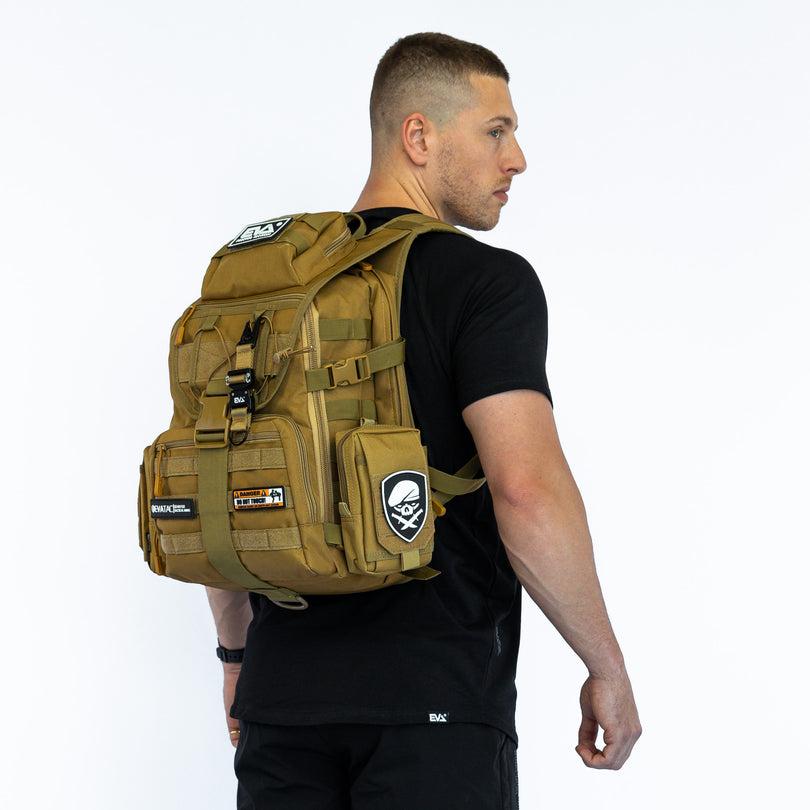
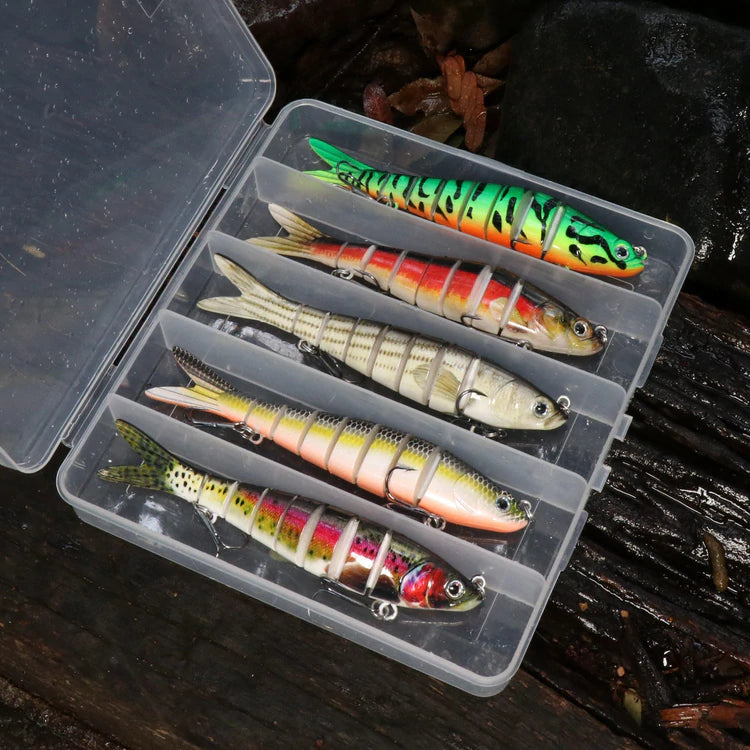


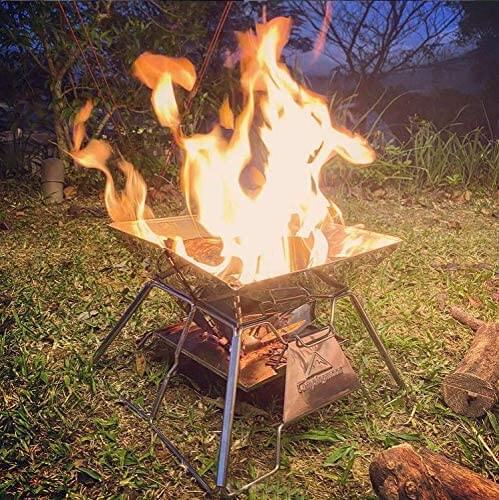
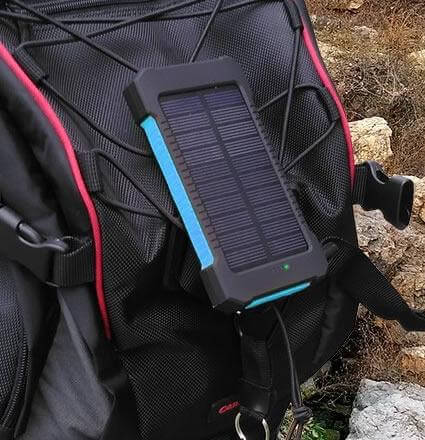

2 comments
Martin
I’m sorry to say this, but the headline of this post is very misleading. There is no information about how or where or when to catch Australian Salmon. Nothing about bait, or rigs, or tides, or technique. I might as well have read National Geographic or some other tourism or eco-related post. Just wasted 10mins of precious fishing research time!
I’m sorry to say this, but the headline of this post is very misleading. There is no information about how or where or when to catch Australian Salmon. Nothing about bait, or rigs, or tides, or technique. I might as well have read National Geographic or some other tourism or eco-related post. Just wasted 10mins of precious fishing research time!
GREG DENARO
The pictures are not of Australian Salmon. No tackle advice, no technique information, no idea. Get a proper fisherman to write your articles please.
The pictures are not of Australian Salmon. No tackle advice, no technique information, no idea. Get a proper fisherman to write your articles please.